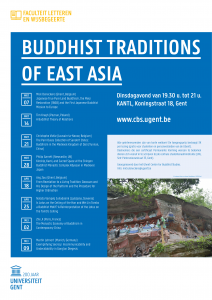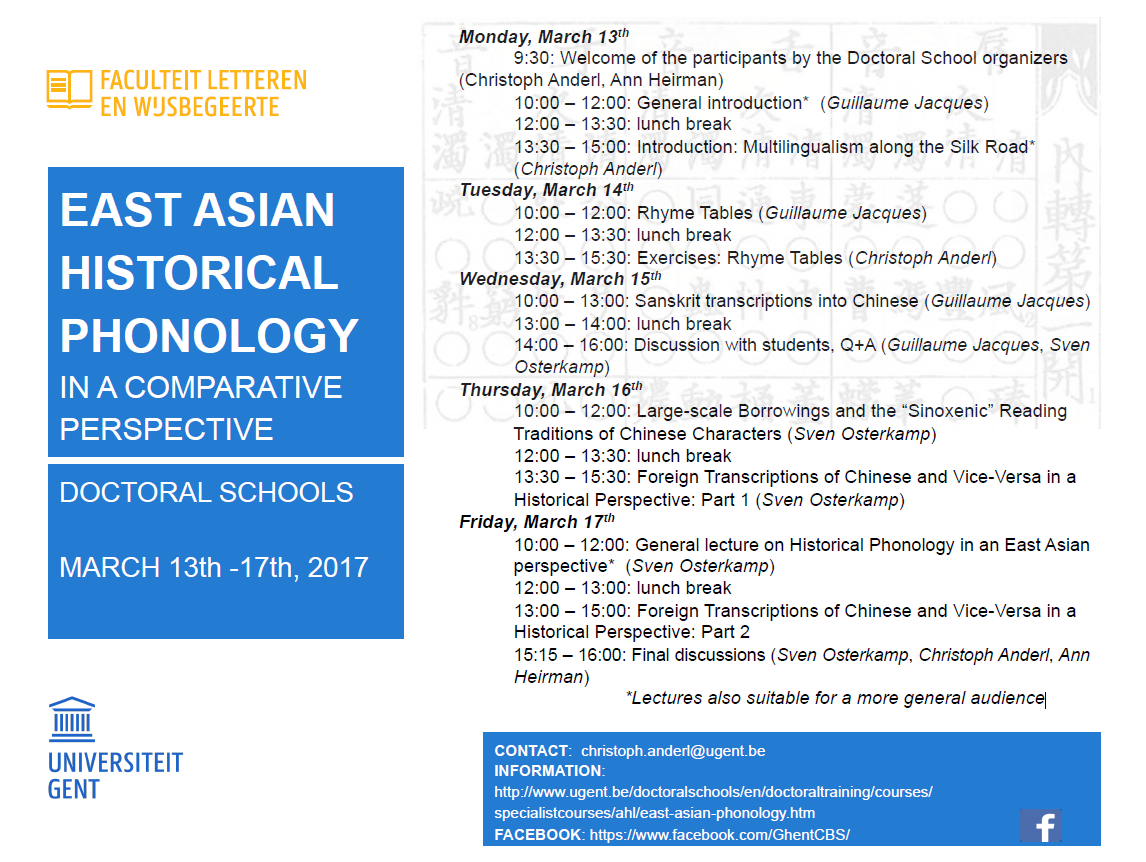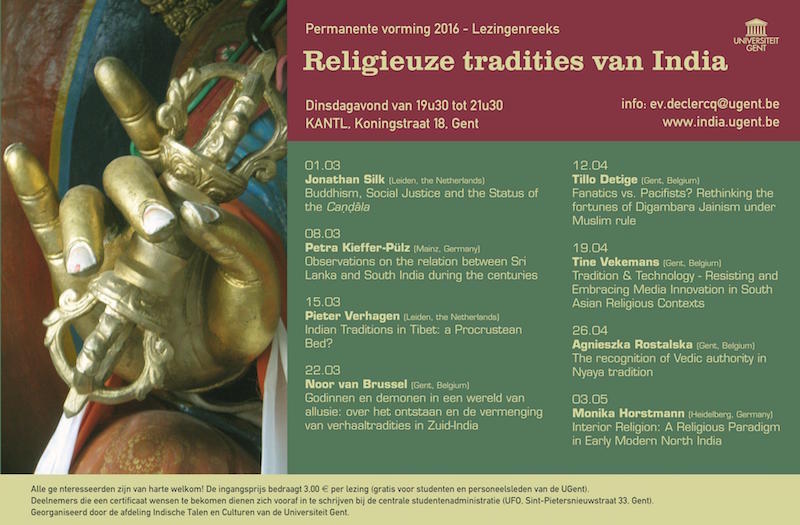Abstract: The course will introduce Chinese Buddhist apologetic texts from two different periods. Dr. Jülch will deal with the Zhenzheng lun 甄正論 written in the Tang dynasty, and Dr. Zhang with the Dayuan zhiyuan bianwei lu 大元至元辨偽録 written in the Yuan dynasty. In the course, selected parts of the texts will be translated, their historical background analyzed, and methodological issues discussed.
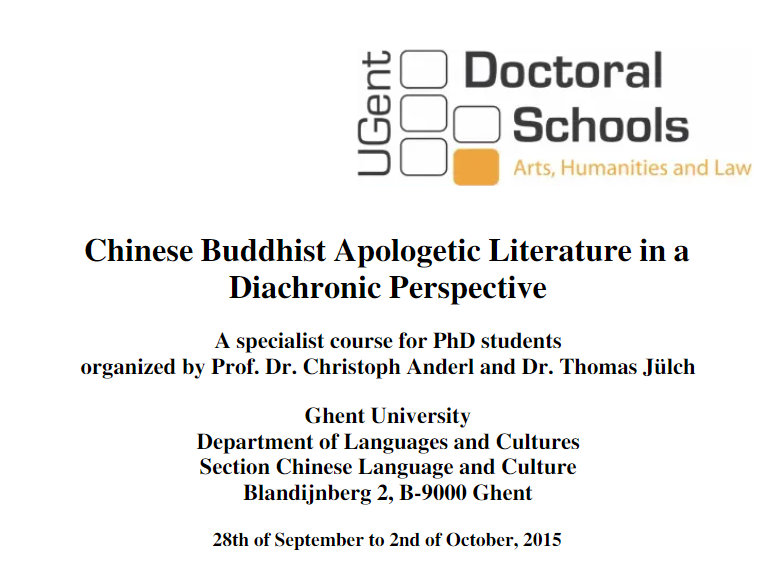
“Chinese Buddhist Apologetic Literature in a Diachronic Perspective” – A specialist course for PhD studentsorganized by Prof. Dr. Christoph Anderl and Dr. Thomas Jülch
Ghent University, Department of Languages and Cultures, Section Chinese Language and Culture, Blandijnberg 2, B-9000 Ghent
28th of September to 2nd of October, 2015
The organizers of the course cordially invite PhD students of Ghent University, as well asfrom other universities, to participate in this training course taught by Dr. Thomas Jülch (Ghent University) and Dr. Zhang Dewei (University of Macao). Participation is free of charge.
The course will introduce Chinese Buddhist apologetic texts from two different periods. Dr. Jülch will deal with the Zhenzheng lun 甄正論 written in the Tang dynasty, and Dr. Zhang with the Dayuan zhiyuan bianwei lu 大元至元辨偽録 written in the Yuan dynasty. In the course, selected parts of the texts will be translated, their historical background analyzed, and methodological issues discussed. On Monday, the 28th of September, we will begin with a short welcome at 09:30. The subsequent schedule will remain the same for all course days (Monday to Friday):
10:00 – 12:00: morning session;
12:00 – 13:00: lunch break;
13:00 – 15:00: afternoon session
Proceedings / Locations:
Monday, 28th of Sept.; topic: Zhenzheng lun; room: Plateau-Rozier, D2. 20
Tuesday, 29th of Sept.; topic: Zhenzheng lun; room: Plateau-Rozier, D2.43
Wednesday, 30th of Sept.; topic: morning: Zhenzheng lun, afternoon: Dayuan zhiyuanbianwei lu; room: Plateau-Rozier, D2.20
Thursday, 1st of Oct.; topic: Dayuan zhiyuan bianwei lu; room: Plateau-Rozier, D2.43
Friday, 2nd of Oct.; topic: Dayuan zhiyuan bianwei lu; room: Plateau-Rozier, D2.43
International students are welcome to participate in the course! For more information, questions, and registration, please contact Dr. Thomas Jülch (Email: Thomas.Julch@UGent.be)
 Length of Stay: April 3-June 29
Length of Stay: April 3-June 29
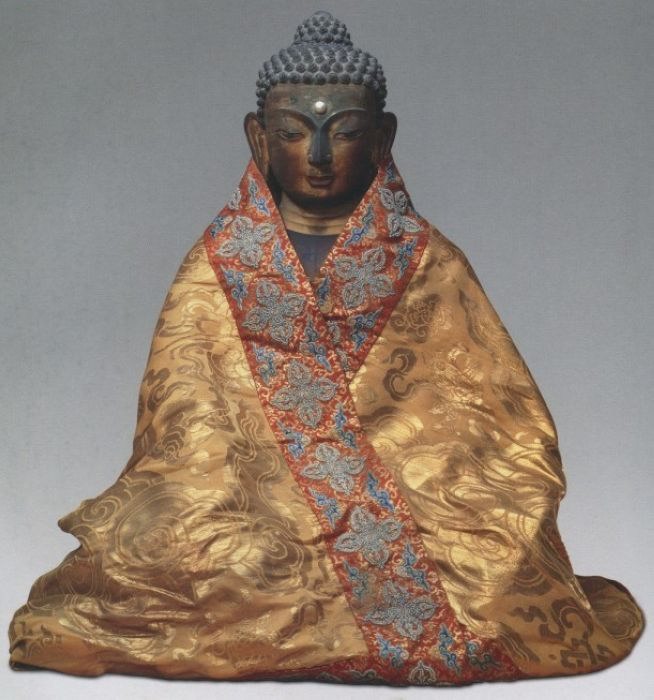 Abstract: Doctoral school on “Buddhism and Silk Culture” features Stuart Young as a guest lecturer. The course aimed to enhance the PhD researchers’ understanding of key questions pertaining to the role of Buddhism in these contexts. While offering a thorough analysis of essential text material in the Chinese medieval period, the instructor, assisted by the organizers, will also introduce specific methodologies of research in medieval Chinese Buddhism, from an East Asian historical, as well as from a religious perpsective.
Abstract: Doctoral school on “Buddhism and Silk Culture” features Stuart Young as a guest lecturer. The course aimed to enhance the PhD researchers’ understanding of key questions pertaining to the role of Buddhism in these contexts. While offering a thorough analysis of essential text material in the Chinese medieval period, the instructor, assisted by the organizers, will also introduce specific methodologies of research in medieval Chinese Buddhism, from an East Asian historical, as well as from a religious perpsective. Dr. Georgios T. Halkias is a specialist on Tibetan forms and practices of Buddhism in Tibet, Central Asia and the NW Himalayas. He completed his MA (Comparative Philosophy) at the University of Hawai‘i and his DPhil (Oriental Studies) at the University of Oxford. He is currently an Assistant Professor of Tibetan Buddhism at the Centre of Buddhist Studies, the University of Hong Kong. He has held several research posts at the Warburg Institute, at Ruhr-Universität Bochum, and has been a British Academy Post-doctoral Fellow at SOAS, University of London. Dr. Halkias has authored many publications including a substantial monograph on the history and development of Pure Land Buddhism in Tibet, Luminous Bliss: a Religious History of Pure Land Literature in Tibet. With an Annotated Translation and Critical Analysis of the Orgyen-ling golden Small Sukhāvatīvyūha-sūtra (Hawaii: University of Hawai‘i Press 2012) and various articles and book chapters. Dr. Halkias is currently researching the translation history of Buddhism in Tibet.
Dr. Georgios T. Halkias is a specialist on Tibetan forms and practices of Buddhism in Tibet, Central Asia and the NW Himalayas. He completed his MA (Comparative Philosophy) at the University of Hawai‘i and his DPhil (Oriental Studies) at the University of Oxford. He is currently an Assistant Professor of Tibetan Buddhism at the Centre of Buddhist Studies, the University of Hong Kong. He has held several research posts at the Warburg Institute, at Ruhr-Universität Bochum, and has been a British Academy Post-doctoral Fellow at SOAS, University of London. Dr. Halkias has authored many publications including a substantial monograph on the history and development of Pure Land Buddhism in Tibet, Luminous Bliss: a Religious History of Pure Land Literature in Tibet. With an Annotated Translation and Critical Analysis of the Orgyen-ling golden Small Sukhāvatīvyūha-sūtra (Hawaii: University of Hawai‘i Press 2012) and various articles and book chapters. Dr. Halkias is currently researching the translation history of Buddhism in Tibet.